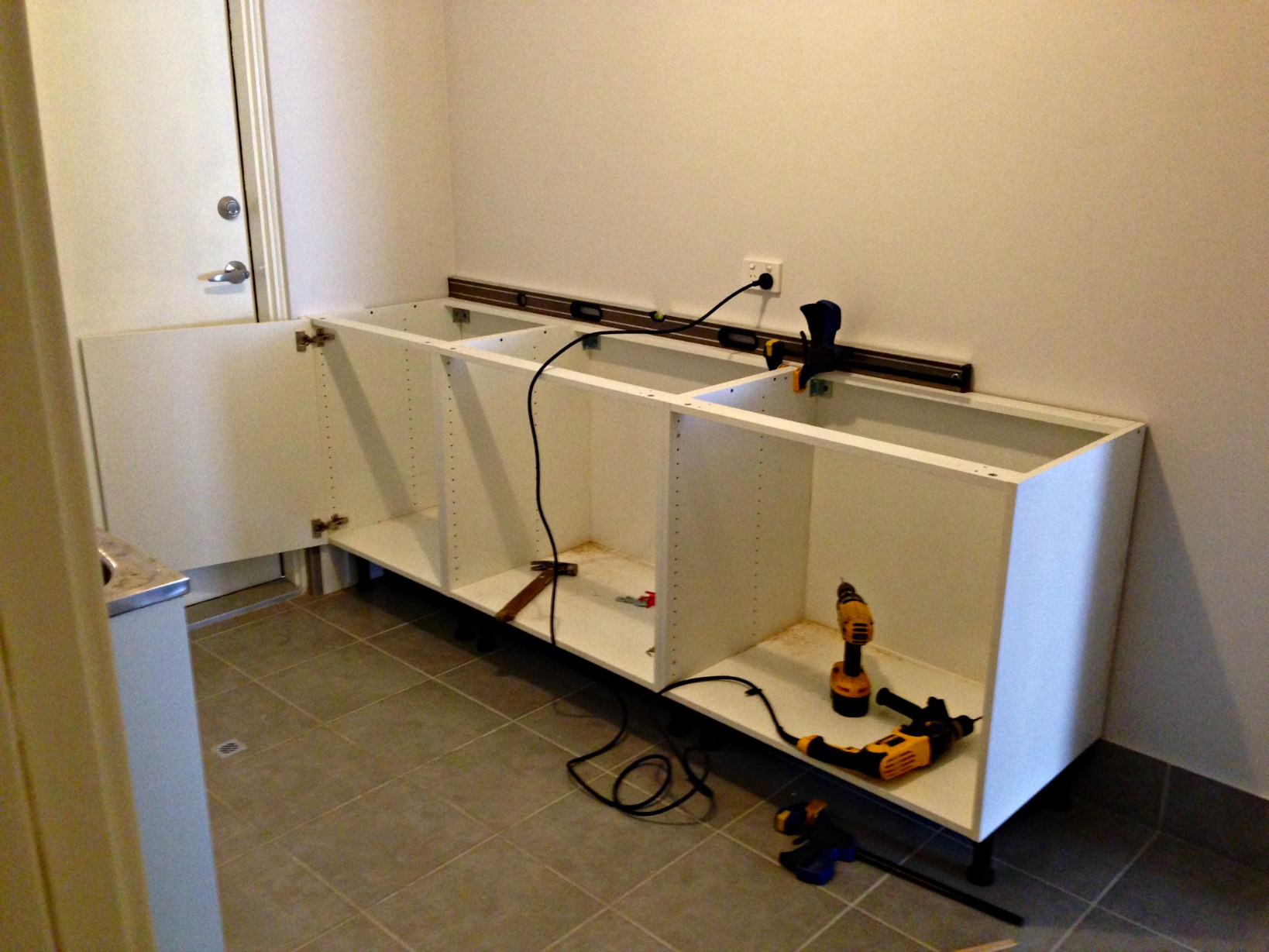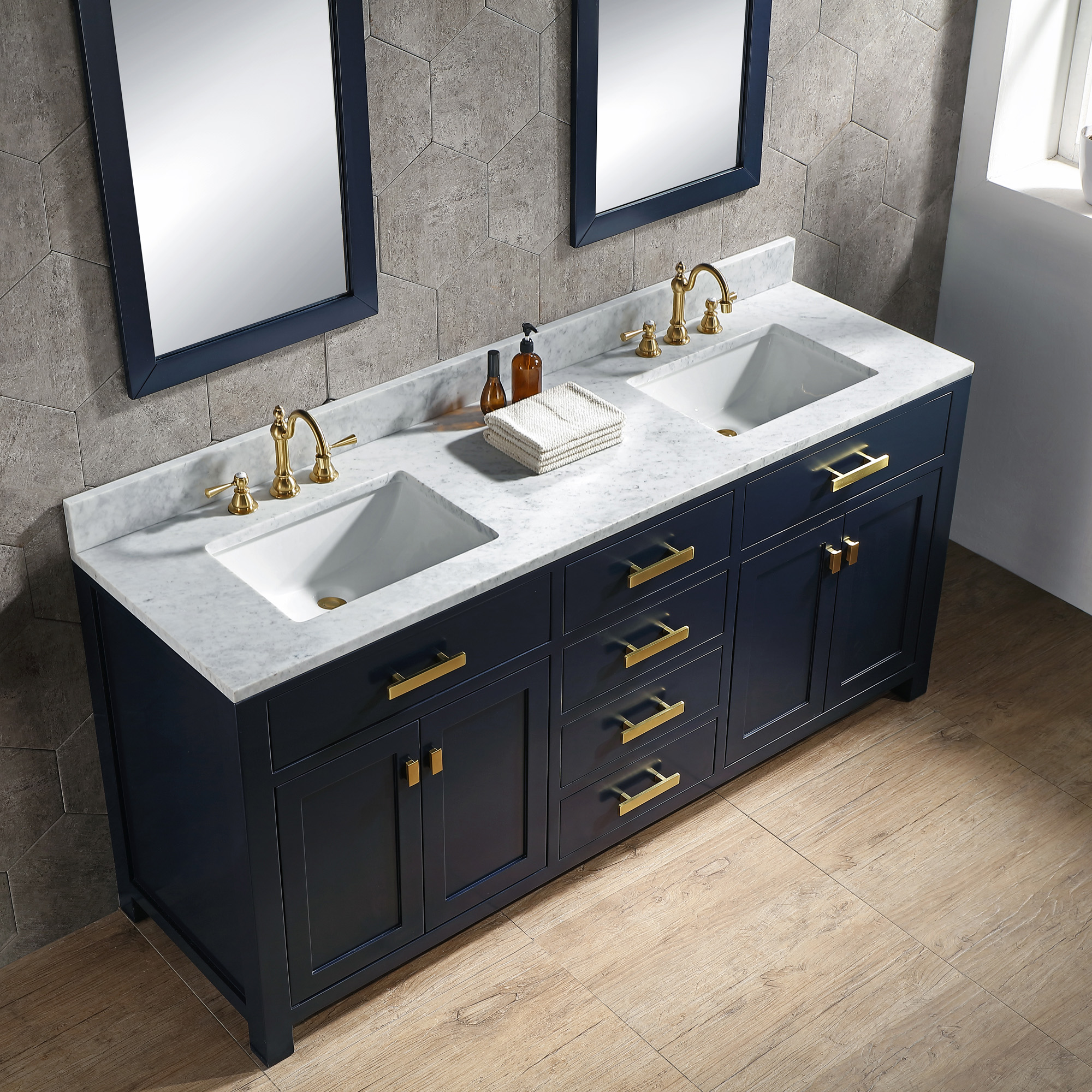Choosing the Right Kitchen Base Cabinets for Your Bathroom

Transforming your bathroom into a haven of style and functionality can be achieved with the right choice of cabinetry. Kitchen base cabinets, often overlooked for bathroom use, can be a surprisingly effective and budget-friendly solution. This approach offers a blend of durability, design versatility, and often a more affordable price point compared to traditional bathroom vanities.
Cabinet Size and Layout Considerations, Using kitchen base cabinets in bathroom
Determining the ideal size and layout for your bathroom base cabinets is crucial. Consider the dimensions of your bathroom, the placement of plumbing fixtures, and the desired storage needs.
- Measure carefully: Accurate measurements are essential. Measure the available space, taking into account any existing fixtures, doorways, or other obstructions. Ensure that the cabinets you choose will fit comfortably within the allocated space.
- Sink placement: The location of your sink will determine the size and style of the base cabinet you need. If you have a standard-sized sink, a 30-inch wide cabinet will likely be sufficient. For larger sinks or double sinks, you’ll need wider cabinets.
- Storage needs: Assess your storage requirements. If you need ample storage, consider incorporating deeper cabinets, drawers, or even a combination of both. If space is limited, opt for smaller cabinets or open shelving.
Installing Kitchen Base Cabinets in Your Bathroom: Using Kitchen Base Cabinets In Bathroom

Installing kitchen base cabinets in your bathroom can be a great way to add storage and style to your space. However, it’s important to consider the unique challenges of working with plumbing and electrical systems in a bathroom. This guide will walk you through the process step-by-step, covering everything from preparation to finishing touches.
Preparing for Installation
Before you begin installing your kitchen base cabinets, it’s essential to prepare your bathroom for the project. This includes removing any existing fixtures or cabinetry, ensuring the floor is level, and making necessary adjustments to accommodate the new cabinets.
- Clear the area: Remove all existing fixtures, including the toilet, sink, and vanity. If you’re keeping the existing plumbing, be sure to cap off the pipes to prevent leaks.
- Check for level: Use a level to determine if your bathroom floor is level. If not, you may need to shim the cabinets to ensure they are stable and sit properly.
- Measure and plan: Measure the space where you plan to install the cabinets. Consider the location of plumbing and electrical outlets, and make sure you have enough room for the cabinets and any doors or drawers.
- Prepare the walls: If necessary, remove old wallpaper or paint to prepare the walls for the cabinets.
Installing the Cabinets
Once you have prepared your bathroom, you can begin installing the kitchen base cabinets. It’s essential to use the right tools and techniques to ensure the cabinets are securely attached and level.
- Assemble the cabinets: Follow the manufacturer’s instructions to assemble the cabinets. Be sure to use the correct hardware and tools.
- Install the base cabinets: Attach the base cabinets to the wall using screws or anchors. Make sure the cabinets are level and plumb.
- Install the countertop: Once the base cabinets are installed, you can install the countertop. Make sure to seal the seams between the countertop and the cabinets to prevent leaks.
Addressing Plumbing and Electrical
Installing kitchen base cabinets in a bathroom requires special considerations for plumbing and electrical work. It’s essential to know the location of pipes and wires to avoid damage and ensure proper installation.
- Locate pipes and wires: Use a stud finder or a pipe and wire detector to locate pipes and wires in the walls.
- Modify cabinets: If necessary, modify the cabinets to accommodate pipes and wires. This may involve cutting holes or using special brackets.
- Hire a professional: If you’re not comfortable working with plumbing or electrical systems, it’s best to hire a licensed professional to handle these tasks.
Customizing Your Cabinets
Kitchen base cabinets can be easily customized to fit your bathroom needs. This may involve adding shelves, drawers, or doors to create a unique and functional storage solution.
- Add shelves: Install adjustable shelves to create flexible storage solutions.
- Install drawers: Add drawers to create a more organized storage space.
- Install doors: Install doors to hide clutter and create a clean look.
Tools and Materials
To install kitchen base cabinets in your bathroom, you will need the following tools and materials:
- Screwdriver: A screwdriver is essential for assembling and installing the cabinets.
- Drill: A drill with various bits is helpful for drilling pilot holes and attaching the cabinets to the wall.
- Level: A level is essential for ensuring the cabinets are installed straight and level.
- Measuring tape: A measuring tape is essential for determining the size of the cabinets and planning their installation.
- Stud finder: A stud finder is helpful for locating wall studs for attaching the cabinets.
- Pipe and wire detector: A pipe and wire detector is essential for locating pipes and wires in the walls to avoid damage during installation.
- Safety glasses: Safety glasses are essential for protecting your eyes from debris during installation.
- Work gloves: Work gloves protect your hands from scratches and splinters during installation.
- Cabinet screws: Cabinet screws are used to attach the cabinets to the wall.
- Cabinet anchors: Cabinet anchors are used to attach the cabinets to drywall or other non-stud surfaces.
- Caulk: Caulk is used to seal the seams between the cabinets and the countertop to prevent leaks.
- Cabinet hardware: Cabinet hardware includes hinges, handles, and knobs.
